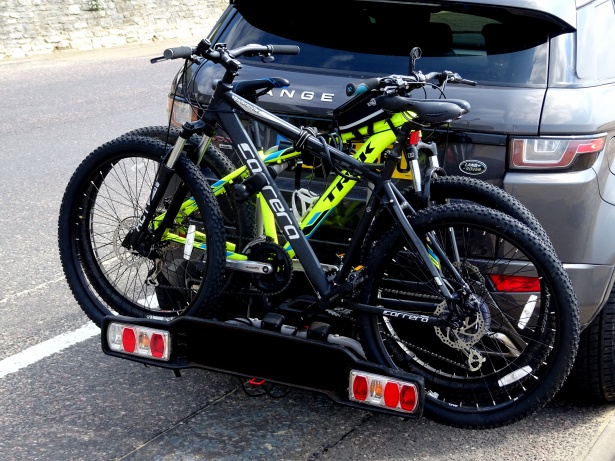Knowing how to put a bike on a bike rack is a fundamental skill for cyclists of all levels. In this guide, we will go through the step-by-step process of securely placing your bicycle on different types of racks, ensuring a hassle-free journey.
From preparing your bicycle for transport to selecting the right rack type based on your vehicle, we will cover essential tips to enhance safety and ease of use and also consider the importance of factors like security, maintenance, and accessory selection.
Whether you’re a cycling enthusiast or a beginner, unlock the secrets to effortless bicycle rack utilization and elevate your biking experience.
Types of Bike Racks
Bicycle racks are essential for transporting your bicycles easily, but choosing the right type can be a game-changer. Let’s explore four common bike rack types, along with their pros and cons, to ensure your cycling adventures are not only convenient but also tailored to your specific needs.
1. Boot Racks
These stands are easy to install and budget-friendly, fitting a wide range of vehicle types. Their convenience is a pro, as they allow for unrestricted access to your car’s trunk or rear.
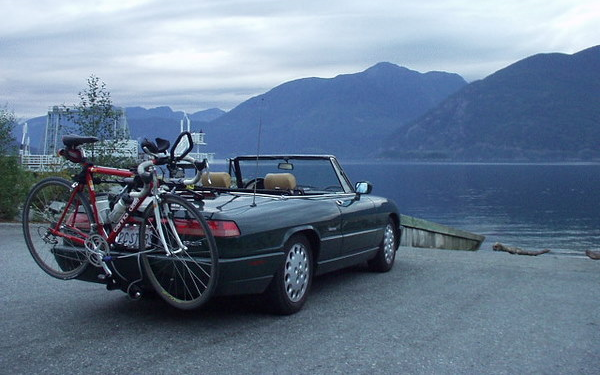
However, they can block your rearview, requiring extra caution while driving. Weight limits and potential restrictions on bike types may also be a drawback, making them less suitable for heavy-duty biking adventures.
2. In Estate Car Racks
Known for their stability and capacity to transport multiple bicycles securely, these stands attach to a hitch receiver, ensuring reliability. Some models even offer convenient features like tilt or swing-away mechanisms for trunk access.
On the downside, not all vehicles come equipped with hitch receivers, making this choice less universal. They also tend to be pricier and may require assembly.
3. Roof Racks
Versatile and adaptable for various cargo types, roof racks keep bikes clear of the vehicle, which is advantageous on rough terrain. They grant access to your car’s trunk without obstacles.

However, loading and unloading bicycles onto a roof can be challenging, especially for taller vehicles. Plus, they increase the vehicle’s height, potentially impacting fuel efficiency and necessitating extra caution in low-clearance areas.
4. Hatch or Boot Racks
Specifically designed for hatchback cars or vehicles with rear-mounted spare tires, these stands are easy to install and store when not in use. They offer convenient trunk access, but their vehicle-specific design may limit compatibility.
Weight and size restrictions can also limit the number and type of bikes you can transport using these racks.
How to Choose the Right Bike Rack?
Choosing the right bicycle rack involves looking at important factors, especially when there are four different types. First, check if the rack matches your vehicle: boot racks work with most cars, estate car racks need a hitch receiver, roof racks need roof rails, and hatch/boot racks are made for specific vehicle models.

Next, see how many bikes the rack can carry; estate car racks are good for carrying more than one bicycle. Putting the holder on varies; boot racks are easy, roof racks might need professional help, and hatch/boot racks are usually simple.
Think about being able to get to your car’s trunk easily; boot and hatch/boot racks let you do that. Consider security, too. Lastly, consider your budget; boot racks are cheaper, roof racks cost more but are universal, and estate car racks, as well as hatch/boot racks, give good value in their categories. These factors will help you find the right stand for you.
Tools Required
- Bicycle Rack
- Allen Wrench or Hex Key
- Straps or Clamps
- Step Stool (For Roof Stands)
How to Put a Bike on a Bike Rack?
Prepare Your Bike
Preparing your bicycle is essential for a smooth loading process. Begin by removing any detachable items from your bicycle, such as water bottles, saddlebags, or accessories.

Ensure the tires are properly inflated to avoid any issues during transport. Additionally, shift your bicycle to a lower gear to prevent it from swaying or shifting during transit.
Position Your Bike
Positioning your bicycle correctly is crucial for a secure load. Stand your bike next to the rack on the side where you’ll be loading it.
If you’re using a roof stand, position your bicycle parallel to your vehicle, with the drivetrain (chain and gears) facing away from the car. For trunk-mounted, hitch-mounted, or hatch/boot racks, follow the rack’s specific instructions for positioning your bicycle.
Secure the Bike Frame
Depending on your type of bicycle stand, you’ll need to secure your bike’s frame. For roof stands, lift your bicycle onto the roof of your vehicle, taking care to maintain balance and avoid damaging your car.
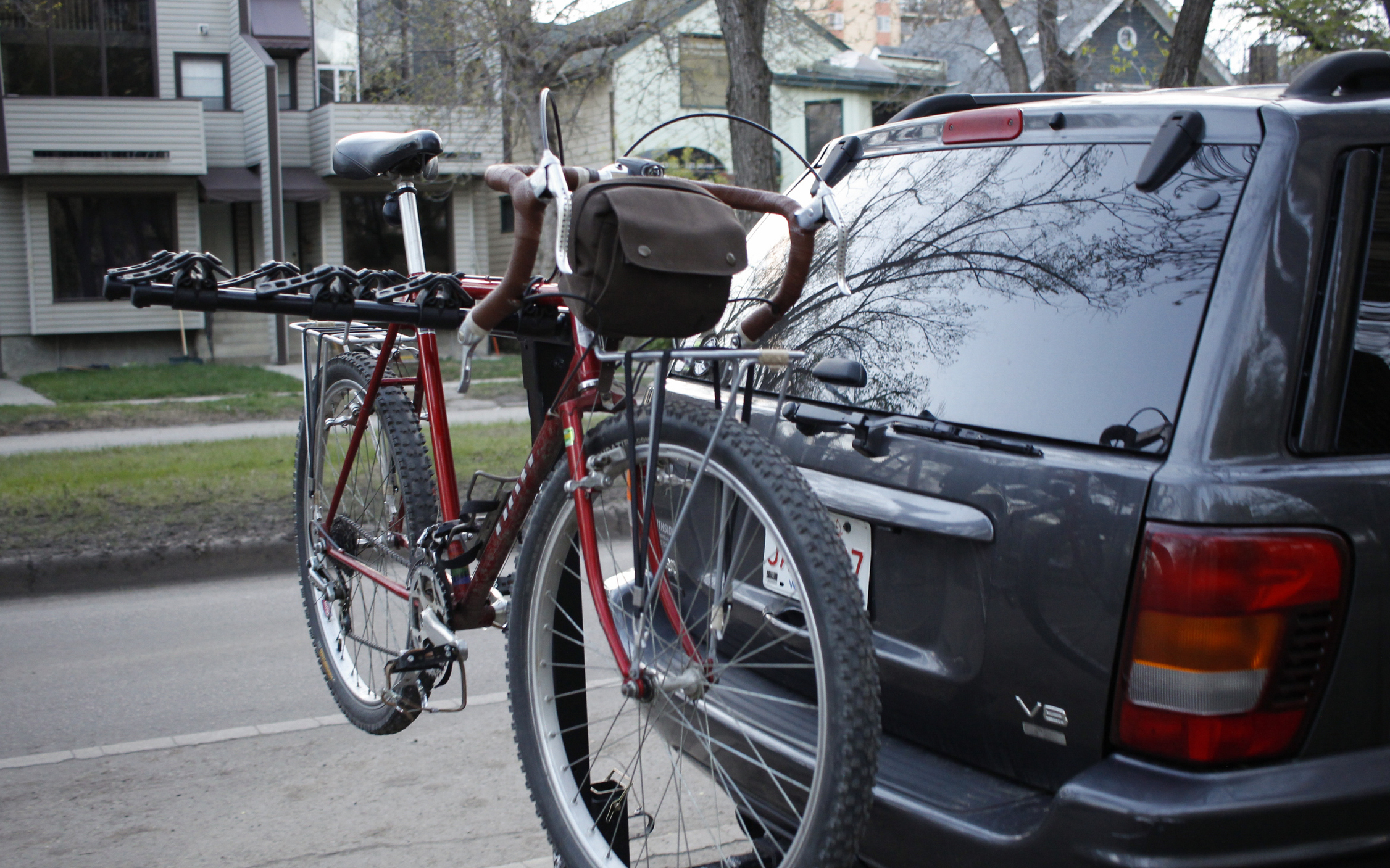
For trunk-mounted, hitch-mounted, or hatch/boot racks, follow the stand’s instructions for securing the bicycle frame. Typically, this involves placing the bicycle’s top tube onto the rack’s arms or cradles.
Fasten Straps or Clamps
Most stands come with straps, clamps, or tie-downs to secure your bicycle in place. Use these to your advantage. Tighten the straps or clamps, ensuring they hold the bike securely in place without over-tightening, which could damage your bicycle frame.
Check for Stability
Once your bicycle is secured, give it a gentle shake to ensure it’s securely fastened to the stand. It should not wobble or move excessively. For roof racks, double-check that the bike is centered and aligned properly, preventing any unwanted shifting during transport.
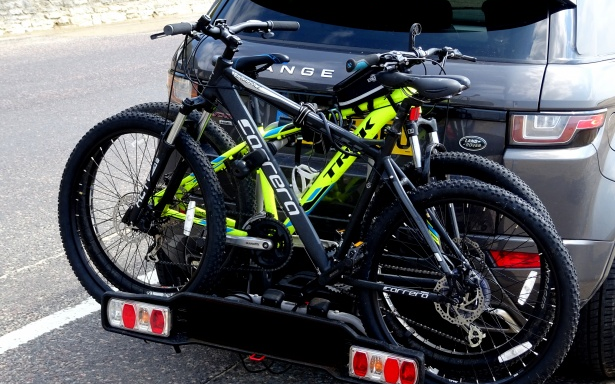
Step 6 Secure Loose Ends
Tuck in any loose straps or tie-downs to prevent them from flapping in the wind or getting caught in your bike’s wheels during transit. Ensuring all straps are neatly secured not only enhances safety but also reduces wind resistance during travel.
Safety Considerations
Safety should always be a top priority when putting your bike on a rack. Ensure all loose parts, including pedals and handlebars, are securely fastened. Double-check the stand’s stability and attachment to your vehicle, ensuring it’s locked in place.
Regularly inspect the stand for signs of wear, rust, or damage, as well as your bicycle for loose bolts or worn components. These precautions not only protect your valuable equipment but also ensure a safe and worry-free journey for both you and fellow road users.
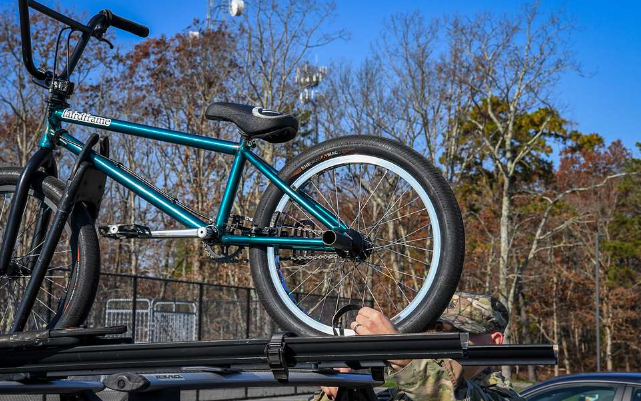
Prioritizing safety while using a bicycle stand guarantees that your cycling adventures remain enjoyable and accident-free.
Bike Rack Accessories
Accessories are essential components for enhancing your cycling journey. Among the most valuable accessories are wheel mounts, frame adapters, and locks. Wheel mounts, such as fork mounts and wheel trays, ensure your bicycle remains stable and secure during transit, preventing unwanted wobbling or damage.
Frame adapters are crucial in universal compatibility, allowing bikes of various sizes and shapes to fit snugly on the rack. To safeguard your investment, bicycle rack locks, including cable locks, hitch pin locks, and integrated systems, provide peace of mind by deterring theft and ensuring your bicycles remain safely attached.

These accessories collectively elevate your bicycle rack experience, making it convenient, secure, and worry-free, so you can focus on enjoying your cycling adventures to the fullest.
Maintaining Your Bike Rack
To extend the lifespan of your rack and ensure its reliable performance, proper maintenance is crucial. Regularly clean your rack to remove dirt, debris, and road grime that can accumulate over time, paying attention to hinges, joints, and moving parts.
Lubricate these components with a suitable bike-friendly lubricant to prevent rust and maintain smooth functionality. When not in use, store your stand in a dry and sheltered area to shield it from the elements, further prolonging its durability.

By following these simple maintenance tips, you can keep your rack in excellent condition and ready for many more cycling adventures to come.
Conclusion
Learning how to put a bike on a bike rack is an essential skill for any cyclist. Invest in quality accessories like wheel mounts, frame adapters, and locks to enhance your bicycle rack experience.
Protect your bicycles during transit and ensure a worry-free journey. With these tips and a little practice, you can load and secure your bicycle effortlessly, allowing you to begin your countless cycling adventures with ease.
So, gear up, hit the road, and let your bicycle stand be your trusted companion in exploring new horizons while keeping your prized bicycles safe and ready for action.
FAQs
Use a frame adapter for women’s bicycles to securely fit them on a rack with ease.
Place a cruiser bicycle on the rack’s wheel trays or slots and secure it with straps.
Mount a Thule bicycle rack according to the manufacturer’s instructions, then load your bicycle onto the rack and secure it.
Attach the bicycle to the hitch rack’s designated slots or trays and secure it with straps or clamps.

